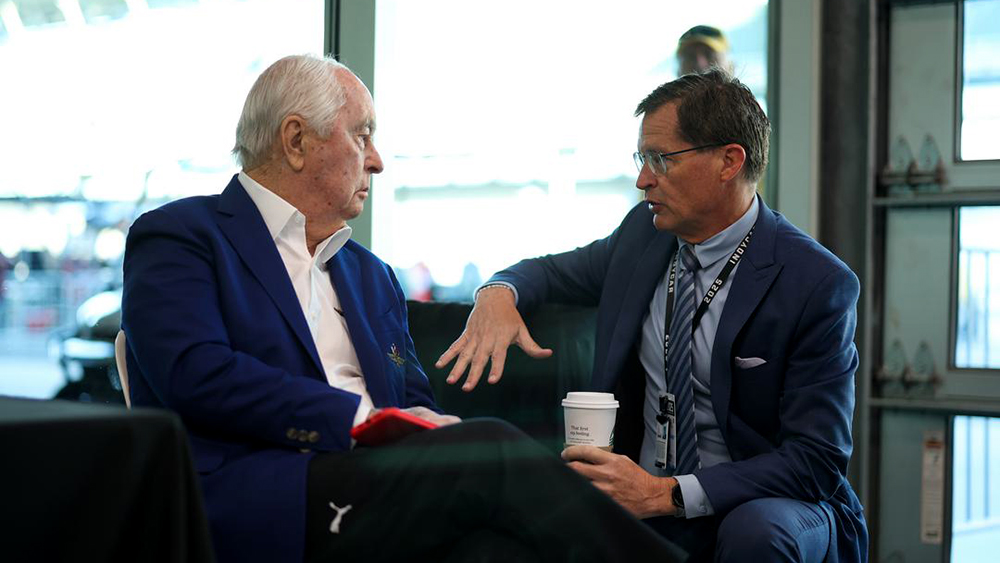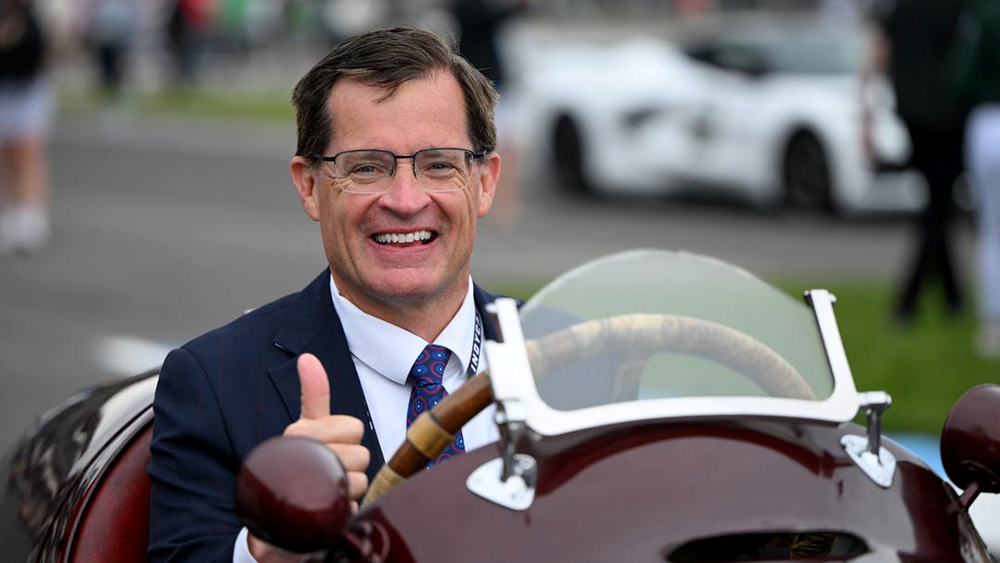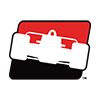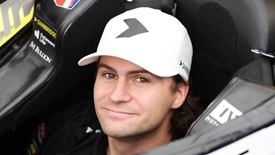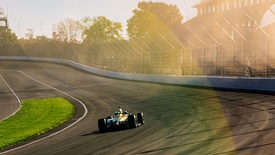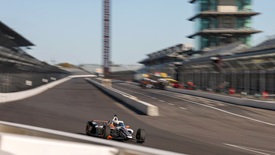Five Questions With … J. Douglas Boles
OCT 23, 2025
Since being named INDYCAR president in February, longtime Indianapolis Motor Speedway President J. Douglas Boles (photo, above) has literally been at the epicenter of all things INDYCAR and IMS. That was never more evident this week when INDYCAR tested modifications made to the second corner of the IMS oval, work Boles approved due to a bump that had emerged amid years of shifting of the historic bricks beneath the asphalt.
By all accounts, it was a successful test. Reigning Indianapolis 500 champion Alex Palou and fellow NTT INDYCAR SERIES star Pato O’Ward gave the IMS team high marks for its work, setting the stage for what should be another thrilling “500” when the 110th Running is held on Sunday, May 24.
Boles offered feedback from this week’s test and spoke to other topics impacting INDYCAR during a media availability at IMS. These are Five Questions posed to Boles by reporters:
Q: What is the history behind the Turn 2 bump, and do you feel it has been removed?
Boles: (The bump) started several years ago, in 2020, I believe. We had been having some track issues, and we were out at night fixing (those) and noticed the bump while some headlights were shining on it. You could actually see a shadow where that bump was beginning to develop. So, we’ve been watching it for five or six years now. Leading into (this year’s) May, the bump was higher than it was in 2024 – we measure the (entire) track so we can see where things are every year. We had to roll (that area of Turn 2) to get it back to 2024 levels, and we felt good … that it was fine for the Month of May. But during the summer, the heat in Indiana really allowed those bricks to push further into the surface.
In (July), NASCAR driver Kyle Larson was the first to notice (the bump) and a couple of other places that we were also able to solve inside Turn 2. Our concern was, if we didn’t fix it this fall and it continued to do what it looks like it’s done for the past 24 months, we’d end up in a situation where we couldn’t fix that bump in time to run the (2026) Indianapolis 500 (without drivers) having to manage that bump throughout the race. We felt the best thing to do was to excavate the asphalt, get down there and understand what’s going on with the bricks, get the bricks out that were a problem, resurface it and get out there and test to make sure it’s good to go.
(We) were a little bit nervous (Tuesday), to be real honest with you, hoping that everything was fine. It’s too important not to go really well. I talked to Pato first, and he said there’s no issues at all. He thinks it’s great. Then, talking to Palou, he said the same thing. They both said it’s ready to go racing. There are no grip-level differences. It’s now nicer that it’s (been modified). Alex said it would be safer coming off (Turn) 2 two-by-two, so I like where we are.
Q: Turn 2 wasn’t the only thing tested this week. What were the additional items on the to-do list?
Boles: We worked on some brake situations. We saw some incidents in May, so we’re trying to figure out if there’s a way to eliminate some of those problems with brakes as drivers come in (to pit road). So, we’re looking at some things. We also looked at some shocks. We’ve talked for a long time about (the benefits) of spec shocks. Should we or should we not have spec shocks? So, we tested some different shock options. It’s not that we’re making that decision now, but you can’t make a decision if you don’t have data. Those will be future decisions that we’ll make. Some of them could be next year, such as brakes for example, and (spec) shocks could be for the future.
Q: Since we’re on the subject of the “500,” this year’s race was announced as a sellout of grandstand seats, the first such occurrence since the 100th Running in 2016. Given that, is there now an expectation that sellouts should happen each year moving forward?
Boles: In 2016, we did it and were excited about it, but a lot of that was the 100th Running – people weren’t going to miss (that historic event). Since then we’ve (thought), ‘We’ve got to get back to that.’ But then we had (the pandemic in 2020), and we had to build back up from that 135,000 (for the 2021 race with only half-capacity). It was great being able to (sell out) last year! Now, there’s a little bit of pressure on us. Now that has to be the norm. We have to do everything we can (to make it happen). The (IMS) team feels good about it, and I feel really good about the passion the team has toward (achieving) that and making that something that people in the future just know we’re going to do, and it’s not something we’re talking about 215 days out from the race each year.
Q: INDYCAR has been working toward the introduction of a new chassis for 2028. Where does that program stand?
Boles: We gave the (NTT INDYCAR SERIES) team owners an initial look at the car in October of last year, and then we had another opportunity with team owners and team managers to take a look at it (during recent meetings). I think we’ll get it finalized (and) be public with it hopefully before (the first quarter of 2026), and hopefully (soon after) we’ll be able to have a car for people to see. Then we can start testing it next summer.
Q: Another important series initiative is the revamping of race officiating given the optic challenges the in-house system presents. What progress has INDYCAR made in advance of the 2026 season?
Boles: We have three or four options. We talked to the teams at Road America (in June) about three of them, and I think we’ve added a fourth one since then. I think we’ll make a decision here in the next few weeks because we have to be able to put everything in place (before the season-opening Firestone Grand Prix of St. Petersburg on Sunday, March 1). We’ve come a long way (with) a lot of great options, a lot of great input from the teams, a lot of great input from other series. We’ve talked to the FIA, and we’ve talked to ACCUS about what works and what doesn’t work. The challenge is to put something together that we feel comfortable with. If it’s independent and we can refine it as we go forward, that may be where we go. But I feel pretty good that we’ll be all set by (the time the season starts).
